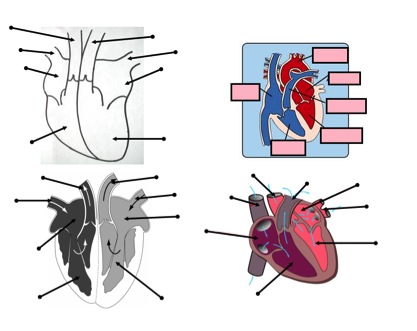Models in science education
So much of what we deal with in science cannot be seen and so models are a powerful tool in the science classroom that help us represent, describe, explain and reason about the material world. Models slow students’ thinking down and encourages them to think deeply and imaginatively about scientific ideas. Asking students to create models helps make their thinking visible, giving teachers insight into their current understanding and misconceptions.
Why use models?
- Modelling is an important part of the scientific process. For example, climate change models allow scientists to make predictions and test theories. In this way models are forms of explanations (Hardman, 2017 )
- Models help students understand abstract scientific ideas that cannot always be seen – these are representational models
- If students create models it can make their thinking visible, allowing rapid feedback from teacher to student and student to teacher
In general, scientists favour the simplest, parsimonious models over the more complex ones (this is know as Occam’s Razor). The simplest models are those that represent a complex scientific process through a ‘simple’ mathematical equation. Often models may explain some aspects well and other aspects less well. What’s important is how well a model explains a specific aspect of the world, for a particular purpose (Hardman, 2017).
When should we use models?
A model helps to clarify thinking and resolve understanding. A model is best used after the scientific explanation. If a model is used too early on, students don’t appreciate its explaining power and instead only see its literal parts. Setting project work around models can be incredibly motivating – Yr7 love to make models of specialised cells as homework.
 Types of model in science lessons
Types of model in science lessons
Scale models: help students visualise an idea, process or system that is too small to see. For example, modelling metallic structures using bubbles.
Analogue models: help make links between an abstract idea and a real-world situation that students can understand. For example, comparing a cell to a city and comparing circuits to ropes and central heating systems.
Use this template in your lessons to help students compare features of analogue models to the target concept.
Historical models: help show how ideas have changed through time. Models increase in sophistication over time and so often mirror the changing ideas students have. Models need to be adapted throughout history because they need to explain ever-more complex ideas. For example, models of atomic structure throughout history.
Mathematical models: help show and predict what happens to certain variables when parameters are changed. For example, modelling radioactive decay.
Theoretical models: help bring together a range of experiences and theories. For example, evolution.
Using models effectively in science lessons
- Can students describe the model in their own words? Are they seeing what you are seeing?
- Can students identify limitations of the model?
- Can students suggest improvements to the model?
- Can students create and evaluate their model?
Free online animations and models
Phet free online animations for biology, chemistry and physics. These animations are fantastic and free to download to use in your science classrooms.
Further reading
- Frost, J., & Toplis, R. (Eds.). (2010). Learning to Teach Science in the Secondary School: a companion to school experience. Routledge.
- Hardman, M. A. (2017). Models, matter and truth in doing and learning science. School Science Review, 98 (365), 91-98.
- Parkinson, J. (2002) Reflective Teaching of Science 11-18. London: Continuum.
- Schwarz, C.V., Reiser, B.J., Davis, E.A., Kenyon, L., Achér, A., Fortus, D., Shwartz, Y., Hug, B. and Krajcik, J. (2009) Developing a learning progression for scientific modeling: Making scientific modeling accessible and meaningful for learners. Journal of Research in Science Teaching: The Official Journal of the National Association for Research in Science Teaching, 46(6), pp.632-654.
- Whitehouse, M. (2015). Science and models. Science Spotlight Issue 5. OCR
- Planning lessons: the EPIBA approach
- Clearly defined lesson objectives
- The Do Now
- Activate prior knowledge
- Challenge your students
- Use a context
- Challenge all students appropriately
- Use direct instruction to provide clear explanations
- Model abstract ideas in concrete ways
- Use questioning to probe understanding
- Check for understanding – give and get feedback
- Troubleshooting – why did it go wrong?
